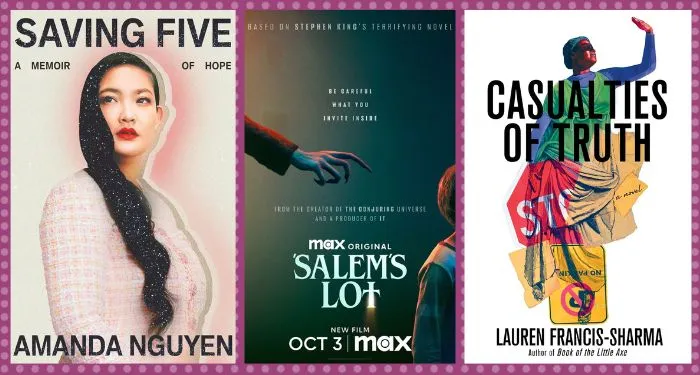Midway through The Plague, Albert Camus’s 1947 novel about a French Algerian city beset by a deadly pandemic, a journalist and a doctor discuss a record playing on a phonograph. It’s “St. James Infirmary,” a blues and jazz standard about a man visiting his dead lover at the morgue. The journalist admits that he’s been playing the record a lot. The repetition, he says, is like life during a plague: “the same thing over and over again.”
The choreographer Twyla Tharp has cited The Plague as an inspiration for How Long Blues, which premiered in June at Little Island, the public park that has been floating on the Hudson River since 2021. (Like many people, she was drawn to the novel because of the Covid-19 pandemic.) Tharp has called the show her “fantasy of Camus and Sartre,” the French philosopher-novelists who turned from friends to rivals. The soundtrack, however, was not French but mostly American: a medley of largely blues and jazz classics rearranged by Tharp, the guitarist-producer T-Bone Burnett, and the composer David Mansfield in a blend of recordings and live renditions. Among them were “St. James Infirmary” and “How Long Blues,” in which the singer laments his lover’s departure and wonders how long his pain will last.
Tharp is one of our greatest living choreographers, still making dances in her early eighties. Her first full-length new work in a decade, How Long Blues was hyped as the kickoff to a series of newly ambitious programming at the venue. In the U-shaped outdoor amphitheater, as the sun set on the river, the Broadway star Michael Cerveris appeared first, a pipe dangling from his mouth and a newspaper in hand. While a trumpeter in a hoodie played “My Way,” the longtime Tharp dancer John Selya entered in a trench coat, smoking a cigarette, and sauntered across the stage as lovers spun around him and waiters ran by. Amid much more dancing, the two men sat at café tables and had a conversation we couldn’t hear. They visited a nightclub, argued, and reconciled.
At other times during the hourlong show, Selya kicked around a soccer ball and occasionally coughed. Cerveris, in academic regalia, put him through an ordeal of follow-the-leader. To vaguely North African music cut by the crack of whips, Selya writhed on his back and crawled at the feet of ponytailed women swishing seductively. He was visited by a spirit walker–like figure cloaked in raffia, and by people wearing giant puppet heads. Ensemble members spun like dervishes, skirts billowing. Someone threw Selya a boulder that looked as light as papier-mâché. He caught it and carried it on his shoulder.

Julieta Cervantes
A scene from Twyla Tharp’s How Long Blues at Little Island, New York City, 2024

Nina Westervelt
A scene from Twyla Tharp’s How Long Blues at Little Island, New York City, 2024
Some of this could be glossed with facts about the two writers. Born and raised in Algeria, Camus was a passionate soccer player in his youth, and he struggled with tuberculosis all his adult life; the pipe marks Cerveris as the Sartre figure; and anyone who has heard of Camus’s “The Myth of Sisyphus” will recognize that boulder. But such literary knowledge only took you so far. Much more helpful in making sense of Tharp’s choices in the show was familiarity with the rest of her career. How Long Blues wasn’t just a bewildering collage of narrative fragments, frantic dancing, and allusions to literature and philosophy. It was a ghost town, populated by the memories of earlier works.
*
Born in 1941 and raised by striver parents who owned a car dealership and a drive-in theater in Rialto, California, Tharp was a ferociously driven child, an A student who took lessons in music, ballet, baton-twirling, and much else. She graduated from Barnard College in 1963, when the new thing in dance was Judson Dance Theater, a Greenwich Village–based collective of experimentalists, close to the minimalist visual artists who sometimes performed with them. A latecomer to the movement, Tharp made her first works under its influence, forming her own company in 1965.
Like Judson pieces, hers were performed in unconventional spaces (rooftops, parks), could incorporate elements of deadpan incongruity (yo-yos, eggs), and might toy with the performer-audience relationship (dancing in the dark or inside a box). “We kind of liked the idea of making audiences unhappy then,” Tharp once said. But her early work stood out for its braininess, a methodical push toward the limits of spatial and rhythmic complexity, producing what she called “carefully plotted chaos.”
Tharp’s Eight Jelly Rolls (1971) was both an outgrowth of this approach and an escape from it. Like How Long Blues, the dance debuted in an outdoor theater (the Delacorte in Central Park) and gave a central place to early jazz. In chic tuxedos, sleeveless and backless, Tharp and five other women wiggled and twirled to raucous 1920s recordings by Jelly Roll Morton, the pioneering pianist-composer, who transferred an improvisational quality to arrangements. The movement style was omnivorous, borrowing from rock and roll, sports, and ballet, masking finicky musical precision with cool casualness and unfaked fun. The dancers could slump and stumble like drunks—Tharp’s drunk solo was worthy of comparisons to Charlie Chaplin or Buster Keaton—while pulling off complicated coordinations and patterns, flinging legs, hips, and heads in multiple directions at once. They could do their own thing and yet hang together.
No less rigorous and smart than Tharp’s early work, Eight Jelly Rolls was also sexy and funny—sexy because it was funny. It was entertaining, appealing to a much wider audience than Judson’s niche. The old-fashioned jazz seemed to justify the change or draw it out. Much of Tharp’s subsequent work had these qualities. In its voracious, assimilative variety, her choreography spoke of plenitude, like a shopping spree. The surface wildness over the intricate but largely hidden structures communicated liberation without sacrificing coherence. Her carefully plotted chaos was its own message—“an idea about America,” as Joan Acocella once wrote: “that you could indeed have freedom and order at the same time.”
Tharp became one of the most popular choreographers of the 1970s, keeping up her own modern company while working for America’s top ballet troupes and creating dances for ballet’s new superstar, Mikhail Baryshnikov, after he defected from the Soviet Union in 1974. She essentially invented what became known as “crossover ballet,” integrating the previously polarized worlds of ballet and modern dance, often using pop music. She choreographed for television and the movies, too (Hair, Ragtime). As with much early fame, hers was a boon and a burden, and has been for more than half a century.
For Tharp, finding “St. James Infirmary” in The Plague was, I imagine, both a way in and a way back, justifying the use of early jazz in How Long Blues. So was the insertion of “My Way”—a track essential to her Nine Sinatra Songs (1982), a series of virtuosic ballroom duets that’s like a short story collection, one couple after another playing out their particular romantic drama to a different Frank Sinatra number. What makes that work special is how the drama is expressed through movement invention, detailed musicality, and acrobatic daring allied with wit: jungle-gym partnering, last-second catches. Some couples fall in love; others fall apart. Everyone swirls together to “My Way,” that valedictory anthem of self-justification. Nine Sinatra Songs was Tharp doing it her way, using the cheesier side of Sinatra for her own more sophisticated ends.
That mode recurred in How Long Blues, especially in the nightclub sequence, during which a tuxedo-clad Selya danced with a series of women—this one glamorous and melancholy, that one a spitfire, the next one tipsy—and roughhoused aggressively with one of them. In Nine Sinatra Songs (and also Sinatra Suite, a two-dancer version that Tharp made for Baryshnikov in 1983), “That’s Life” serves as the soundtrack for Tharp’s update of an Apache dance, a French cabaret form in which a street thug and a tough woman toss each other around. (“Each time I find myself flat on my face/I just pick myself up and get back in the race,” Sinatra sings.)
The duets in How Long Blues, though, weren’t on the level of those in Nine Sinatra Songs or Sinatra Suite. They were more like Come Fly Away, the 2010 Broadway show in which Tharp rehashed Nine Sinatra Songs, combining the old numbers with new ones and vitiating the subtlety of her earlier work with hard sell and rote repetition. Where the women of Nine Sinatra Songs were equals of their male partners, those in How Long Blues barely registered. And despite all the jazz, the musical wit and wiliness of Eight Jelly Rolls returned only faintly—in, say, the mingling of soccer footwork with the Charleston. Feeble, too, was the Tharpian humor and her characteristic visions of transcendence, represented here by that dervish-like whirling, Cerveris’s rendition of Leonard Cohen’s “Hallelujah,” and an ersatz New Orleans second line celebration to the songs of the Wild Tchoupitoulas. Underneath its existentialist chic, How Long Blues felt less like carefully plotted chaos than repetition compulsion.
*
In her 1992 autobiography, Push Comes to Shove, Tharp described her career as a “Sisyphean treadmill.” The motor of her choreography has always been workaholic drive and insatiable ambition, and to her, age is no excuse to let up. In Keep It Moving: Lessons for the Rest of Your Life (2019), a self-help book, she wrote about the need to resist stagnation and complacency. Older adults, she argued, “are frequently portrayed as out of touch, useless, feeble, incompetent, pitiful, and irrelevant”—expectations that “can become self-fulfilling.” But “contraction is not inevitable,” she continued. “You can resist and reverse.”
Two of Tharp’s greatest predecessors offer contrasting precedents. Merce Cunningham created on a high level nearly to his death at ninety in 2009. Martha Graham made her best work in the 1930s and 1940s, when she was in her forties and fifties, and persisted in putting out diminished self-imitations into the 1980s, dying at ninety-six in 1991.
Tharp, for her part, has been recycling her own material for decades, drawing on successes and even returning to failures, looking to get it right this time—or to prove critics wrong. The incongruous nightmare sequences, puppet heads, and phantasmagoria in How Long Blues echoed The Times They Are A-Changin’, her psychedelic-circus, jukebox musical adaptation of Bob Dylan’s catalogue, which ran very briefly on Broadway in 2006 and was one of the most conspicuous flops of her career.
Her recent programs, such as “Twyla Now” in 2021, have set new variations, usually masterfully constructed but relatively stale, next to revivals. These can be thrilling, especially with the right casting (like the New York City Ballet star Sara Mearns in a role made for Baryshnikov). Tharp hasn’t lost her ability to attract gifted dancers and pull the most from them; just because she hasn’t come up with anything extraordinary in an awfully long time doesn’t mean she never will. Next year, she’s celebrating her sixtieth anniversary as a choreographer with a coast-to-tour featuring a new work set to Philip Glass’s Aguas da Amazonia.
How Long Blues, Tharp has said, is about resilience. She clearly admires Camus’s perseverance, the way that he—like another tubercular hero of hers, the genius George Balanchine, who choreographed important work nearly to his death at seventy-nine in 1983—kept cheating death to make art, picking himself up to get back in the race. But Camus died at forty-six in a car accident in 1960, just a few years after having won the Nobel Prize in Literature. He didn’t have to face growing old as an artist marked early as great. He didn’t have the How Long Blues.





















 English (US) ·
English (US) ·